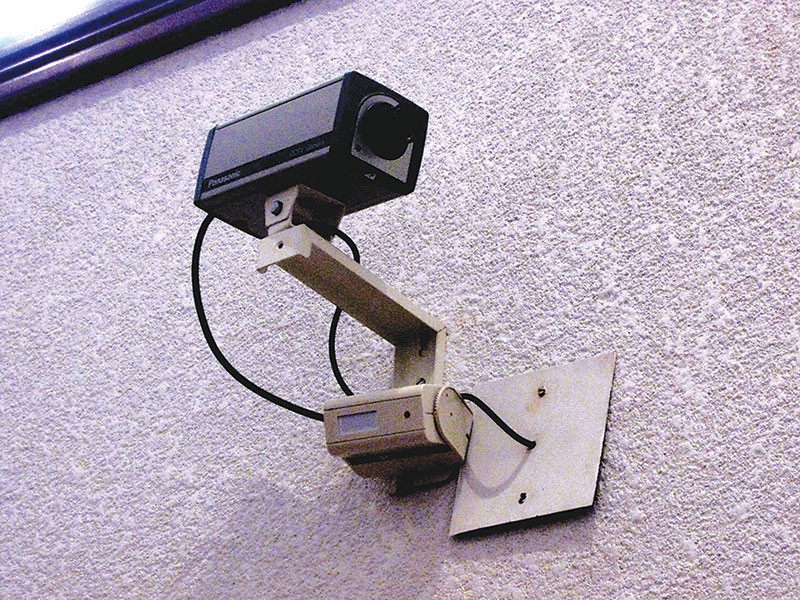This summer, after a civil suit challenged the New York City Police Department’s notorious program of patting down “suspicious” residents, Judge Shira A. Scheindlin of the Federal District Court in Manhattan imposed an experiment in which officers in precincts with the highest reported rates of stop-and-frisk activity would be required to wear video cameras for a year.
Earlier this year, a 12-month study by Cambridge University researchers revealed that when the city of Rialto, Calif., required its cops to wear cameras, the number of complaints filed against officers fell by 88 percent and the use of force by officers dropped by almost 60 percent. In addition, research suggests that Judge Scheindlin has made the right call; requiring officers to wear video cameras helps protect citizens’ Fourth Amendment rights against unreasonable search and seizure.
For example, a 2004 study in criminology and public policy by criminologists Stephen Mastrofski from George Mason University and Jonathan Gould from American University evaluated direct observations of police searches in a medium-sized American city. They conservatively estimated that nearly one-third of police searches were performed unconstitutionally, and almost none of those unconstitutional searches came to the attention of the courts.
Jay Stanley, a policy analyst with the American Civil Liberties Union, calls police-worn video cameras “a win/win for both the public and the police”—i.e., video recordings help shield officers from false accusations of abuse, as well as protecting the public against police misconduct.
Officer-worn video cameras do have the potential to violate the privacy of citizens. After all, the police frequently deal with people who are having one of the worst days of their lives. Police often enter people’s houses to investigate disturbances and disputes. In such cases, video of someone’s metaphorical (or literal) dirty laundry is nobody else’s business.
Consequently, Stanley argues that strong rules regarding the retention, use and disclosure of videos from police-worn cameras must be established and enforced. For example, videos should be retained for no more than 30 to 60 days, unless flagged. Of course, if the video contains evidence of a crime, it should be retained just as any other evidence would. Flagging would also occur for any incident involving force or that produces a citizen complaint. With the appropriate privacy protections in place, very little of police-recorded video would ever be retained or viewed.
Officers should also be required to notify people that they are being recorded. Some preliminary evidence suggests that both police and citizens behave better when they know that they’re being recorded. Additionally, the police should not have discretion to release any video to the public. For example, departments would be barred from “leaking” videos like that of a drunk Reese Witherspoon being arrested in Atlanta for disorderly conduct after a traffic stop. (For what it’s worth, the Atlanta police department denies releasing the Witherspoon scene.)
Besides those legitimate privacy concerns, what possible objections could there be to requiring every officer to wear a camera? Some contend that since practically every citizen can now record police activity using his phone, police-worn cameras are unnecessary. But some states have made it illegal to record people in public without their consent, and the police are often adamant about enforcing that prohibition when the camera is turned on them.
Also, citizen recordings will often be incomplete or misleading. People typically start recording only after an encounter turns aggressive, so the context of what is happening is lost.
Won’t police officers resist wearing video cameras? Initially, perhaps. But most patrol officers are now becoming comfortable with dashboard cameras in their cruisers. A 2004 study for the International Association of Chiefs of Police found that in cases where police misconduct was alleged, in-car video evidence exonerated officers 93 percent of the time.
The same report further noted that dashboard cameras enhanced officer safety, improved agency accountability, reduced liability, simplified incident review, enhanced new recruit training, improved community perceptions, helped advance case resolution and enhanced officer performance and professionalism. In fact, the Atlanta police officer in the Witherspoon dashcam video comes off as quite professional. He consistently refers to Witherspoon as “ma’am” and keeps a level tone of voice despite some fairly hilarious provocation.
Body-worn cameras will clearly augment all of those objectives. And it will accomplish an important democratic task as well: turning the tables on the functionaries of the surveillance state. It gives citizens better protection against police misconduct and against violations of their constitutional rights. And it protects good cops against unfair accusations.
Ronald Bailey is ‘Reason’ magazine’s science correspondent and author of ‘Liberation Biology: A Moral and Scientific Defense of the Biotech Revolution.’











